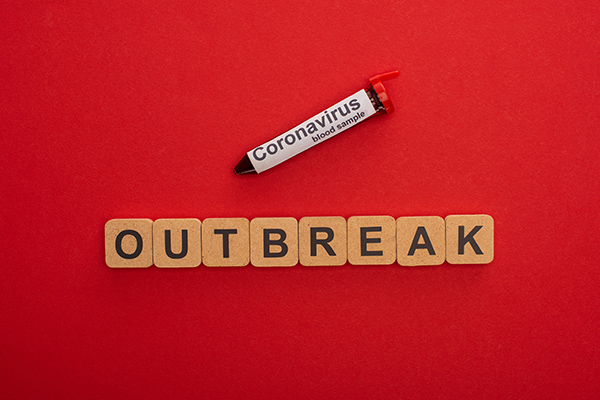Boxed macaroni and cheese—comforting, easy, and, according to a 2017 article by The New York Times, containing “high concentrations” of “[p]otentially harmful chemicals.” Roni Caryn Rabin, The Chemicals in Your Mac and Cheese, N.Y. TIMES, June 12, 2017. Those “chemicals” referenced by the Times are phthalates—versatile organic compounds that have been the focus of increased media, advocacy, and regulatory scrutiny. But what are phthalates and what is the litigation risk to food companies who make products that contain trace amounts of this material?
Background
Phthalates are a class of organic compounds that are commonly used to soften and add flexibility to plastic.1 Ninety percent of phthalate production is used to plasticize polyvinyl chloride (PVC).2 Di-(2-ethylhexl) phthalate (DEHP) is the most commonly used phthalate plasticizer for PVC.3 Due to the prevalence of plastics in the modern world, phthalates are everywhere—from food packaging to shower curtains to gel capsules. Consequently, almost everyone is exposed to phthalates almost all of the time and most people have some level of phthalates in their system.4
Recently, various epidemiological studies have purported to associate phthalates with a range of different injuries, from postpartum depression to obesity to cancer. However, as the Agency for Toxic Substances and Disease Registry (ATSDR) stated in its 2019 toxicology profile for DEHP, these epidemiology studies are flawed because, inter alia, they often rely on spot urine samples to assess exposure, which does not provide long-term exposure estimates or consider routes of exposure.5 To date, claims regarding the effects of low-level phthalate exposure on humans are not supported by human toxicology studies. Instead, phthalate toxicology has only been studied in animals, and some phthalates tested in these animal studies have demonstrated no appreciable toxicity. Two types of phthalates—DBP and DEHP—are purported to be endocrine disrupting (i.e., affecting developmental and reproductive outcomes) in laboratory animals, but only when the phthalates are administered at doses much higher than those experienced by humans.6 Indeed, there is no causal evidence linking any injuries to the low-level phthalate exposure that humans generally experience. Nonetheless, advocacy and government groups have extrapolated from these animal studies to conclude that DEHP may possibly adversely affect human reproduction or development if exposures are sufficiently high.7 Indeed, in the past two decades, a number of regulatory authorities began taking steps to regulate certain phthalates. Most notably:
- In 2005, the European Commission identified DBP, DEHP, and BBP as reproductive toxicants (Directive 2005/84/EC), and the European Union banned the use of these phthalates as ingredients in cosmetics (Directive 2005/90/EC).
- In 2008, Congress banned the use of DBP, DEHP, and BBP in children’s toys at concentrations higher than 0.1%. See 15 U.S.C. § 2057c.
- The EU added four phthalates (BBP, DEHP, DBP, and DIBP) to the EU’s list of Substances of Very High Concern (SVHCs) and, subsequently, to its Authorization List, which lists substances that cannot be placed on the market or used after a given date, unless authorization is granted for specific uses. BBP, DEHP, DBP, and DIBP were banned as of February 21, 2015, except for the use of these phthalates in the packaging of medicinal products.
- In 2012, the FDA issued a statement discouraging the use of DBP and DEHP in drugs and biologic products. At the time, the agency said that these phthalates could have negative effects on human endocrine systems and potentially cause reproductive and developmental problems.8
More recently, phthalate exposure through food has become a trending topic among consumer advocates. Phthalates are not used in food, but can migrate into food through phthalates-containing materials during food processing, storing, transportation, and preparation. Certain studies report that ingestion of food accounts for the predominant source of phthalate exposure in adults and children. However, in assessing DEHP, the ATSDR noted that the current literature on “contamination of foodstuffs comes from outside the United States or does not reflect typical exposures of U.S. consumers; therefore, it is uncertain whether and for which products this information can be used in U.S.-centered exposure and risk calculations.”9 Further, the concentration of phthalates found in food are very low-level—multiples lower than the doses used in animal toxicology studies.10
In 2017, a study published on the advocacy site “kleanupkraft.org” stated that phthalates were detected in 29 of 30 macaroni and cheese boxes tested.11 The study notes that “DEHP was found most often in the highest amounts.” Notably, however, the “amounts” are provided without any context, likely because there is no universally accepted threshold of unsafe phthalate consumption. Thus, although the boxed macaroni and cheese study found “that DEHP, DEP, DIBP, and DBP were frequently detected in the cheese items tested,” and “[t]he average DEHP concentration was 25 times higher than DBP, and five times higher than DEP,” none of this explains whether these numbers are uniquely high and/or dangerous to humans. Meanwhile, on December 10, 2019, the European Food Safety Authority announced an updated risk assessment of DBP, BBP, DEHP, DINP, and DIDP, and found that current exposure to these phthalates from food is not of concern for public health.12
Phthalate Litigation
For years, phthalates in food have been targeted by environmental groups seeking to eliminate use of phthalates in food packaging and handling equipment. Most recently, several lawsuits were filed against boxed macaroni and cheese manufacturers alleging misrepresentation and false advertising due to their undisclosed alleged phthalate contamination. See, e.g., McCarthy, et al. v. Annie’s Homegrown, Inc., Case No. 21-cv-02415 (N.D. Cal. Apr. 2, 2021). Perhaps acknowledging that the amounts contained in the food packages have not been shown to present any danger, these claims are being pursued as consumer fraud claims based on failure to identify phthalates as an ingredient, rather than as personal injury claims.
Besides this recent litigation, however, there has been a notable dearth of phthalate litigation. This is likely due to several factors: First, in general, courts have rejected false claim lawsuits involving trace amounts of a contaminant chemical. See, e.g., Tran v. Sioux Honey Ass’n, Coop., 471 F. Supp. 3d 1019, 1025 (C.D. Cal. 2020) (collecting cases). For example, in Axon v. Citrus World, Inc., 354 F. Supp. 3d 170 (E.D.N.Y. 2018), the Court dismissed plaintiff’s claim that the use of the word “natural” constituted false advertising because the product contained trace amounts of weed killer. Id. at 182–84. The Court based this dismissal, in part, on the fact that the trace amounts of the commonly used pesticide was “not an ‘ingredient’ added to defendant’s products; rather, it is a substance introduced through the growing process.” Id. at 183. Similarly, phthalate is not an intentionally added ingredient—instead, it is a substance introduced, if at all, in trace amounts at various points throughout the manufacturing, handling, and packaging process. Second, proving that phthalate exposure from a particular food item caused an alleged injury would be extremely difficult. As mentioned above, there is no direct scientific evidence linking low-level phthalate exposure in humans to reproductive problems, cancer, or any other injury. Instead, plaintiffs must rely on animal studies where the subject, most commonly a rat, was exposed to enormous amounts of phthalates, many multiples of the amount that would be found in food. Moreover, the pervasive nature of phthalates makes it difficult to pinpoint any particular product as the source of the injury. If every food item a plaintiff ever consumed has been touched by a phthalate-containing material, it seems near impossible to prove that one particular food caused the alleged injury.
Although phthalate litigation has thus far proven unpopular, this landscape could change in the near future due to increased regulatory scrutiny. On December 20, 2019, the EPA stated that DEHP, DIBP, DBP, BBP, and dicyclohexyl phthalate were five of 20 high-priority chemicals undergoing risk evaluation pursuant to the Toxic Substances Control Act.13 The categorization of these phthalates as high-priority initiates a three- to three-and-a-half-year risk evaluation process, which concludes in a finding of whether the chemical substance presents an unreasonable risk of injury to health or the environment under the conditions of use.14 Although the same causation and product identification issues will remain, a revised risk analysis by the EPA may lead to increased phthalate litigation.
The views expressed in this article are exclusively those of the authors and do not necessarily reflect those of Sidley Austin LLP and its partners. This article has been prepared for informational purposes only and does not constitute legal advice. This information is not intended to create, and receipt of it does not constitute, a lawyer-client relationship. Readers should not act upon this without seeking advice from professional advisers.
References
- The most commonly used phthalates are di-(2-ethylhexyl) phthalate (DEHP), diisononyl phthalate (DINP), benzyl butyl phthalate (BBP), di-n-butyl phthalate (DBP), and diethyl phthalate (DEP). See Angela Giuliani, et al., Critical Review of the Presence of Phthalates in Food and Evidence of Their Biological Impact, 17 INT. J. ENVIRON. RES. PUBLIC HEALTH 5655 (2020).
- COWI A/S, Data on Manufacture, Import, Export, Uses and Releases of Dibutyl Phthalate (DBP), As Well As Information on Potential Alternatives To Its Use 10-11 (Jan. 29, 2009). http://echa.europa.eu/documents/10162/
13640/tech_rep_dbp_en.pdf (observing European Council for Plasticizers and Intermediates (ECPI)); Agency for Toxic Substances & Disease Registry, DI-n-BUTYL PHTHALATE, Production, Import/Export, Use, and Disposal (Jan. 3, 2013). http://www.atsdr.cdc.gov/ToxProfiles/tp135-c5.pdf; Peter M. Lorz, et al., Phthalic Acid and Derivatives. ULLMANN’S ENCYCLOPEDIA OF INDUSTRIAL CHEMISTRY (Wiley-VCH: Weinheim, 2000); Lowell Center for Sustainable Production, Phthalates and Their Alternatives: Health and Environmental Concerns 4 (Jan. 2011). https://www.sustainableproduction.org/downloads/PhthalateAlternatives-January2011.pdf. - Michael D. Shelby, NTP-CERHER Monograph on the Potential Human Reproductive and Developmental Effects of Di (2-Ethylhexyl) Phthalate (DEHP). National Toxicology Program, HHS. NIH Publication No. 06-4476 at 2–3 (Nov. 2006).
- See Chris E. Talsness, et al., Components of Plastic: Experimental Studies in Animals and Relevance for Human Health, 364 PHIL. TRANS. R. SOC. B 2079, 2080 (2009). https://www.ncbi.nlm.nih.gov/pmc/articles/PMC2873015/pdf/rstb20080281.pdf.
- Agency for Toxic Substances & Disease Registry, Toxicology Profile for Di(2-Ethylhexyl) Phthalate (DEHP), Draft for Public Comment 3 (Dec. 2019). https://www.atsdr.cdc.gov/toxprofiles/tp9.pdf.
- FDA Guidance for Industry, Limiting the Use of Certain Phthalates as Excipients in CDER-Regulated Products. HHS, FDA. (Dec. 2012).
- NIH Publication No. 06-4476 at 2–3, supra n.3.
- FDA Guidance for Industry. Limiting the Use of Certain Phthalates as Excipients in CDER-Regulated Products. HHS, FDA. (Dec. 2012).
- Toxicology Profile for Di(2-Ethylhexyl) Phthalate (DEHP) at 362, supra n.5.
- Compare id. at 5 (measuring effects of phthalate oral exposure in mg/kg/day) with Samantha E. Serrano, et al., Phthalates and diet: a review of the food monitoring and epidemiology data, 13 ENVIRON. HEALTH 43 (2014) (measuring phthalate concentration in food in μg/kg).
- Testing Finds Industrial Chemical Phthalates in Cheese, Coalition for Safer Food Processing and Packaging. http://kleanupkraft.org/data-summary.pdf.
- FAQ: phthalates in plastic food contact materials. European Food Safety Authority. (Dec. 10, 2019).
- EPA Finalizes List of Next 20 Chemicals to Undergo Risk Evaluation under TSCA. U.S. Environmental Protection Agency. (Dec. 20, 2019).
- Risk Evaluations for Existing Chemicals under TSCA. U.S. Environmental Protection Agency.













